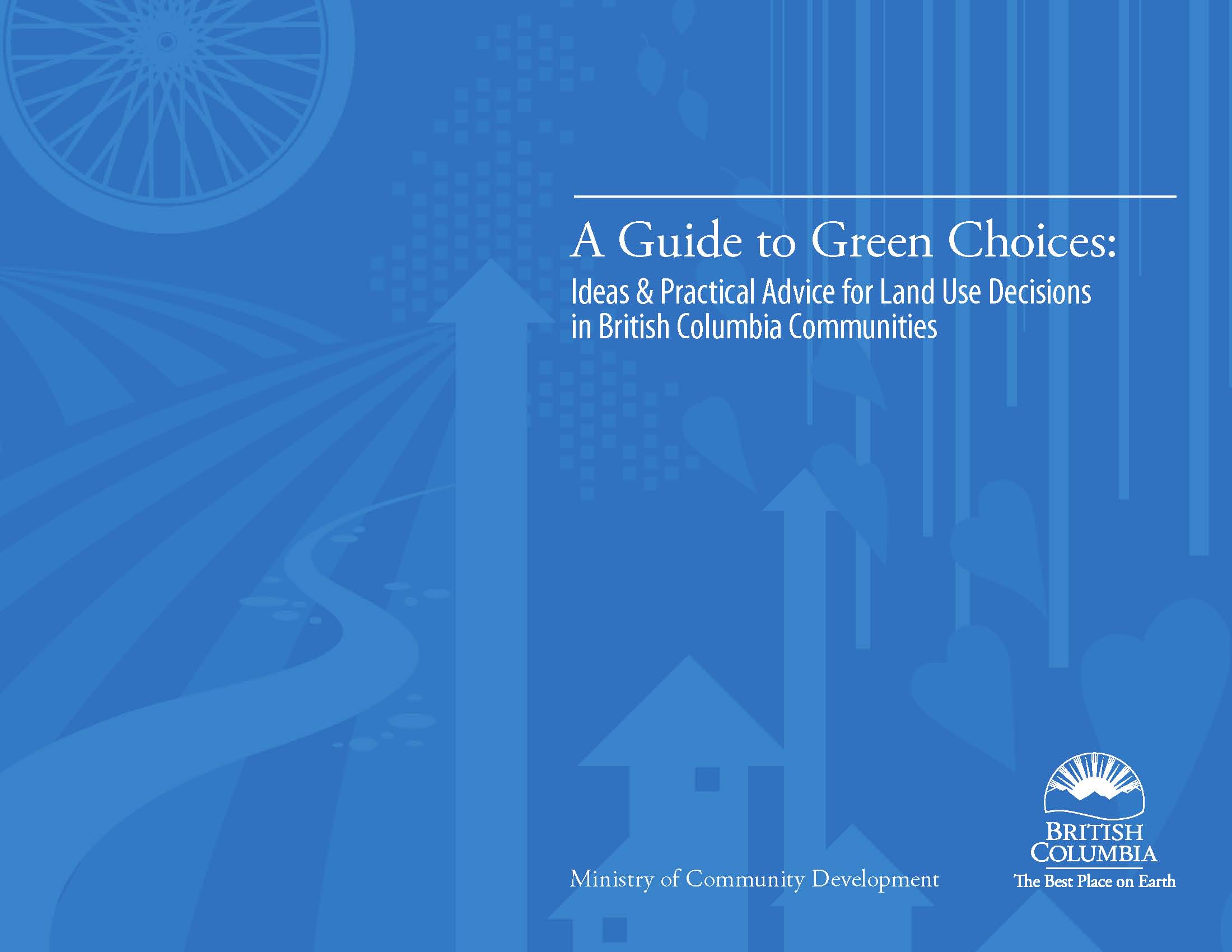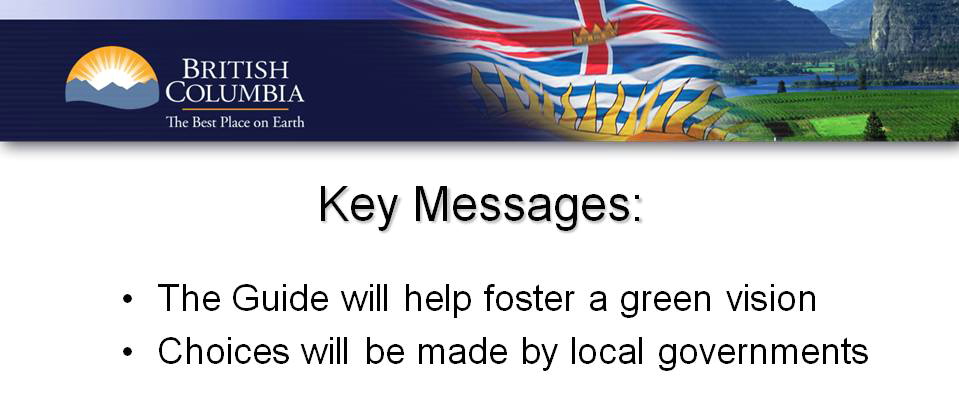FLASHBACK TO 2008: British Columbia released “A Guide to Green Choices: Ideas and Practical Ideas for Land Use Decisions in British Columbia Communities”
Doing Business Differently in BC
To help local governments continue the extensive work they are already doing in fostering green communities, the Ministry of Community Development developed A Guide to Green Choices to provide practical advice and ideas in making land use decisions.
Released in September 2008, this Guide was intended to work in tandem with many other provincial programs and projects, including Living Water Smart, the BC Climate Action Plan and the Water Sustainability Action Plan for British Columbia, An over-arching goal of these initiatives is to encourage land and water managers and users to do business differently.
To Download a Copy:
Making Green Choices
 “We have a series of initiatives within the Ministry that are integrated with other broader provincial initiatives,” stated Dr. Laura Tate in 2008 when the Guide to Green Choices was released. “These are seeking to help us build green communities in our province..We all benefit from having attractive, liveable communities…with a healthy natural environment.” Formerly the Ministry’s Manager of Vancouver Island Growth Strategies, Laura Tate was the lead author for the Guide.
“We have a series of initiatives within the Ministry that are integrated with other broader provincial initiatives,” stated Dr. Laura Tate in 2008 when the Guide to Green Choices was released. “These are seeking to help us build green communities in our province..We all benefit from having attractive, liveable communities…with a healthy natural environment.” Formerly the Ministry’s Manager of Vancouver Island Growth Strategies, Laura Tate was the lead author for the Guide.
Link to YouTube Video:
Click here to view a 2008 YouTube video clip of Laura Tate when she described what is in A Guide to Green Choices. “We are providing local government with the information to make better decisions,” she said.
A Living Document
“The guide is meant to assist communities of all types: large, small, rural, resort-based, urban, and suburban. It is designed to help maximize both creativity and adaptability to varied scales, specific contexts, and changing on-the-ground conditions,” stated Laura Tate.
“This is particularly important when working with local communities, where each have their own settings, histories, needs, and values — and of course their own unique visions for the future. For this reason, A Guide to Green Choices is intended to be a living document. It will be revised over time to address ongoing changes in community needs, and to respond to suggestions from local government.”
The ‘Green’ Destination
What will it look like when we arrive? This ‘green’ destination or vision will mean a healthier natural environment, healthier communities, and healthier citizens, and lead to:
- Public spaces in all communities embraced by urban forests, and well- onnected with safe cycling and walking access to all parts of the community;
- Sustainable, compact rural and urban communities, with a range of options for different household types and sizes;
- Affordable housing choices;
- More opportunities for residents of all communities to comfortably age in place;
- A fitter population;
- A choice of transportation options serving all trips, needs and incomes;
- Diverse and vibrant local economies;
- Air quality improved by 50 percent over 2008 levels, and lowered rates of asthma in the population;
- Lower greenhouse gas emissions;
- Plenty of choices for residents to buy attractive and varied locally-produced foods; and
- Reduced energy and water consumption.
“The vision depends on many players, strong leadership, and a willingness to face challenges en route,” continues Laura Tate. “It needs new approaches, forward thinking and long-term commitment. It will continue to rely on timely decision-making by all parties.”
Integration
“A key theme in A Guide to Green Choices is the notion of integration. It stems from a belief that the solid efforts already being made could be even stronger if they work together in the right direction — not at cross-purposes,”concludes Laura Tate.




